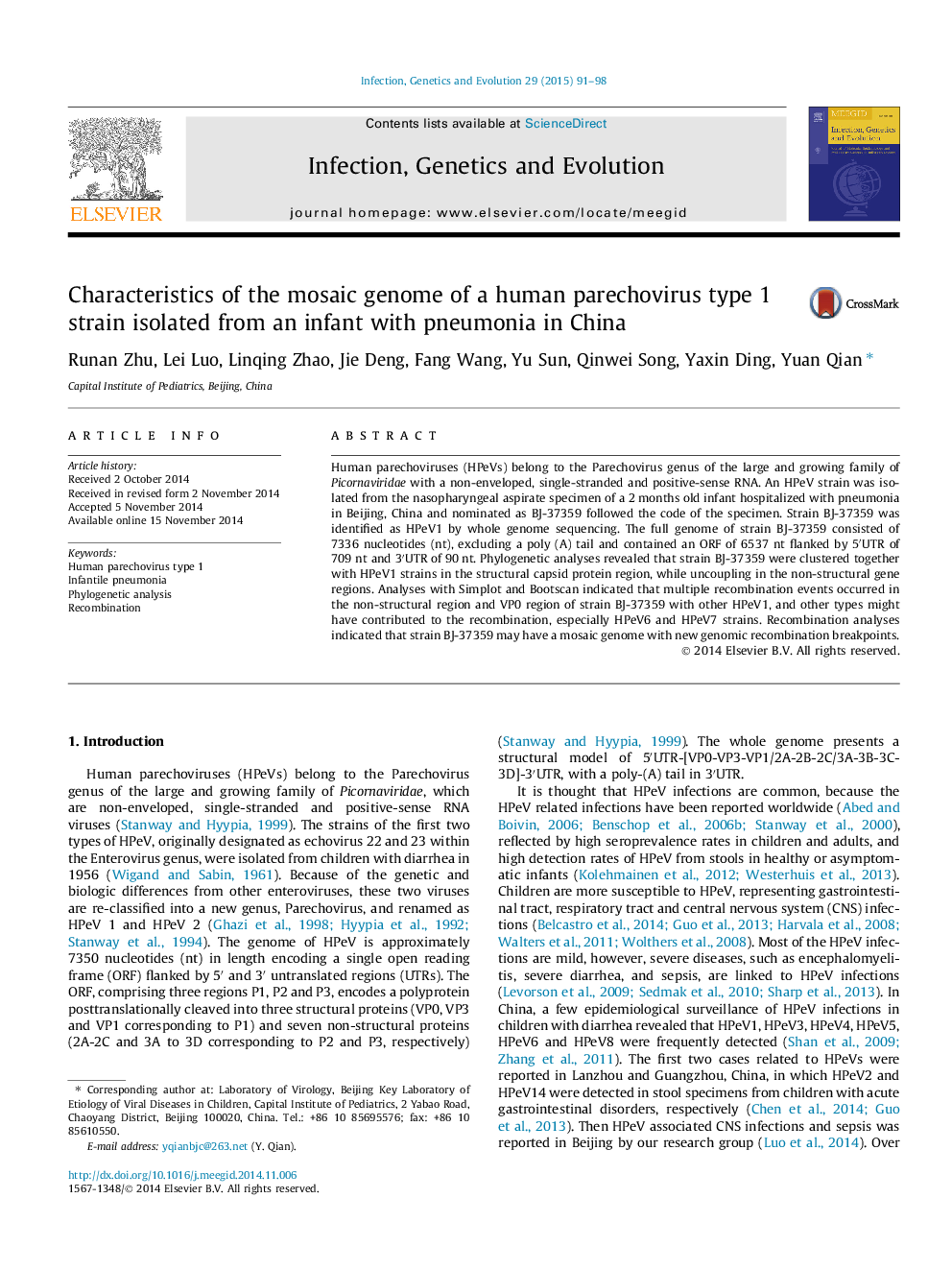| Article ID | Journal | Published Year | Pages | File Type |
|---|---|---|---|---|
| 5909315 | Infection, Genetics and Evolution | 2015 | 8 Pages |
â¢A whole genome of an HPeV1 strain isolated from an infant with pneumonia.â¢Uncoupling of phylogeny relationships between structural and non-structural gene.â¢A mosaic genome of strain BJ-37359 with new genomic recombination breakpoints.
Human parechoviruses (HPeVs) belong to the Parechovirus genus of the large and growing family of Picornaviridae with a non-enveloped, single-stranded and positive-sense RNA. An HPeV strain was isolated from the nasopharyngeal aspirate specimen of a 2Â months old infant hospitalized with pneumonia in Beijing, China and nominated as BJ-37359 followed the code of the specimen. Strain BJ-37359 was identified as HPeV1 by whole genome sequencing. The full genome of strain BJ-37359 consisted of 7336 nucleotides (nt), excluding a poly (A) tail and contained an ORF of 6537 nt flanked by 5â²UTR of 709 nt and 3â²UTR of 90Â nt. Phylogenetic analyses revealed that strain BJ-37359 were clustered together with HPeV1 strains in the structural capsid protein region, while uncoupling in the non-structural gene regions. Analyses with Simplot and Bootscan indicated that multiple recombination events occurred in the non-structural region and VP0 region of strain BJ-37359 with other HPeV1, and other types might have contributed to the recombination, especially HPeV6 and HPeV7 strains. Recombination analyses indicated that strain BJ-37359 may have a mosaic genome with new genomic recombination breakpoints.
